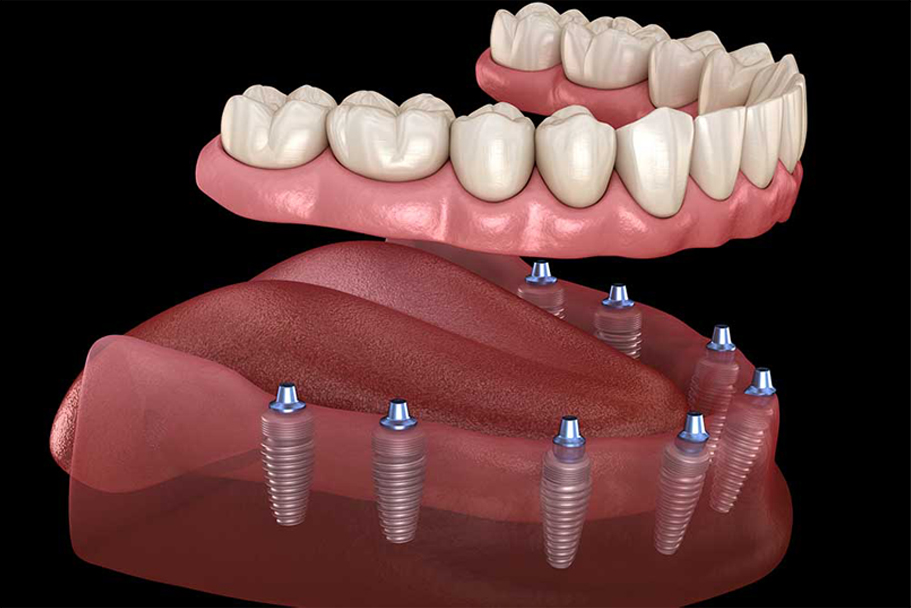ADVANCED DENTAL IMPLANTS
Dental implants are a popular and effective way to replace missing teeth. They are artificial tooth roots made of biocompatible materials like titanium that are surgically placed into the jawbone to support replacement teeth or dental crowns. This procedure has become a standard treatment option for people who have lost teeth due to various reasons such as injury, decay, or periodontal disease.

Here's a detailed write-up about dental implants and the steps involved in the treatment:
1. Initial Consultation and Evaluation:
The first step in the dental implant process is an initial consultation with a qualified dentist or oral surgeon. During this consultation, the dentist will perform a thorough examination of your mouth and take dental x-rays. This helps them evaluate the condition of your jawbone, gums, and adjacent teeth. They will also discuss your medical history to ensure you are a suitable candidate for the procedure.
2.Treatment Planning:
Based on the examination and evaluation, the dentist will develop a personalized treatment plan. This plan will include details about the number of implants needed, the type of implant, and any additional procedures that might be necessary, such as bone grafting or sinus lift.
3.Dental Implant Placement:
- Bone Preparation: If the jawbone lacks the necessary density or thickness to support the implant, a bone graft may be required. This involves taking bone from another part of your body or using synthetic bone material to augment the jawbone.
- Implant Placement: Once the jawbone is ready, the dentist will surgically place the implant into the bone. This is usually done under local anesthesia. A small incision is made in the gum to expose the bone, and a hole is drilled to place the implant. The implant is then screwed or tapped into place. The gum is stitched back up, leaving a small part of the implant exposed.
4.Osseointegration
After the implant is placed, a process called osseointegration occurs. This is where the bone grows and integrates with the surface of the implant. This typically takes several months and provides a stable foundation for the replacement tooth.
5.Abutment Placement:
Once osseointegration is complete, a second minor surgery is performed to attach an abutment to the implant. The abutment is a connector piece that sticks out above the gumline. It serves as the attachment point for the replacement tooth.
6.Impression and Crown Fabrication:
After the abutment is in place, your dentist will take impressions of your teeth and the abutment. These impressions will be sent to a dental lab, where a custom-made dental crown or prosthetic tooth will be created to match the size, shape, and color of your natural teeth.
7.Final Placement:
Once the crown is ready, it is attached to the abutment. Your dentist will make any necessary adjustments to ensure proper fit and bite. The crown is then permanently cemented or screwed into place.
8.Post-Procedure Care and Maintenance:
Your dentist will provide you with detailed instructions on how to care for your new dental implant. This includes proper oral hygiene practices, regular dental check-ups, and any specific precautions you may need to take.
Conclusion:
Dental implants are a long-lasting and natural-looking solution for replacing missing teeth. With proper care and maintenance, they can provide a functional and aesthetically pleasing smile for many years. It's important to consult with a qualified dentist or oral surgeon to determine if dental implants are the right option for you.
